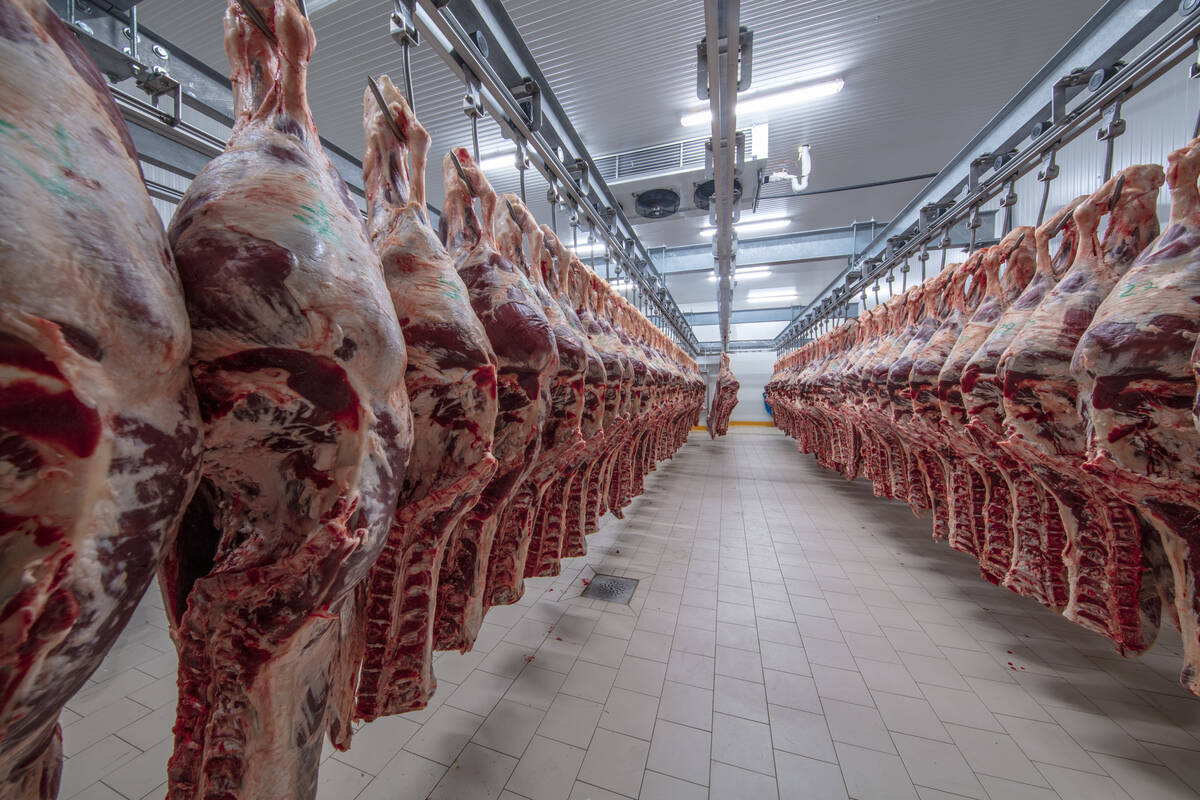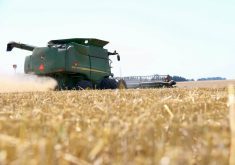Chicago live cattle ended narrowly mixed on Wednesday, with uneasiness about futures’ premium to last week’s cash cattle prices eroding morning gains fueled by the U.S. fiscal deal, analysts and traders said.
An agreement by the U.S. Congress to avoid automatic year-end spending cuts and tax hikes sent the Dow Jones Industrial Average soaring more than 200 points.
Meat company stocks joined in, with Tyson Foods, JBS USA and Smithfield Foods landing in the "plus" column.
Traders who had been waiting on the sidelines for some type of budget agreement felt better about returning to the market on Wednesday, a Chicago Mercantile Exchange (CME) live cattle trader said.
Read Also

U.S. livestock: Cattle make small gains, hogs fall
Chicago cattle futures made modest gains on Monday while hogs pulled back. Most-active February live cattle closed at 230.550 cents…
But CME live cattle investors were also nervous about expanding the futures’ already sizable premium to cash cattle, which traded last week at US$127 per hundredweight (cwt).
Live cattle for February closed up 0.075 cent/lb. to 132.375 cents. April ended down 0.2 cent to 136.175 cents (all figures US$).
Traders expect cash cattle to trade steady to higher this week compared with a week ago.
Packers are buying supplies to process next week, the first full work week after the Christmas and New Year’s holidays.
The western and central U.S. Plains are in the grip of a cold spell that could slow cattle growth rates and make fewer of them available to packers.
But a few processors will likely cut slaughter to offset higher cash prices, improve their margins and lift wholesale beef prices.
HedgersEdge.com put the average beef packer margin for Wednesday at a negative $57.30 per head, compared with a negative $50.85 on Dec. 26, according to HedgersEdge.com.
The price for wholesale choice beef Wednesday morning was $194.01/cwt, down 14 cents from Monday, and select cuts jumped $1.40 to $182.45, according to the U.S. Department of Agriculture.
CME feeder cattle ended weaker, pressured by futures’ premium to the exchange’s feeder cattle index at 147.34 cents. Technical selling pulled down the March contract.
Spot January ended down 0.2 cent/lb. at 151.2 cents. Most-actively traded March was off 0.375 cent at 153.9 cents.
Hogs up with Wall Street
Hog futures settled higher, driven by the budget resolution in Washington and sentiments for higher cash hog prices in the near term, analysts and traders said.
February settled 0.45 cent/lb. higher at 86.175 cents. April ended at 89.25 cents, up 0.525 cent.
Some packers are seen raising cash hog bids as they prepare for a big Saturday slaughter to make up for downtime during the New Year’s holiday, a trader said.
And, he said, some hog farmers in the upper central and western Midwest may keep doors to swine buildings closed to retain heat as colder temperatures settle into the region.
USDA data Wednesday morning showed the average hog price in the eastern Midwest market at $81.59/cwt, up $1.46 from Friday. Hog prices in other hog growing areas were unavailable.
However, processors may soon look to salvage their poor margins by cutting cash bids.
The average pork packer margin for Wednesday was a negative $3.65 per head, compared with a positive 75 cents a week earlier, according to HedgersEdge.com.
— Theopolis Waters writes for Reuters from Chicago.














